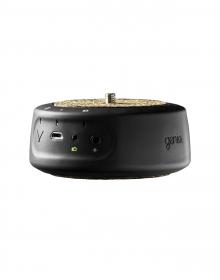Submitted by andre on Fri, 06/15/2012 - 22:51

Dynamic Perception and the Apertus Project have teamed up to produce the first fully integrated camera and motion control system. Together we will expand the capabilities and tools available to filmmakers everywhere, while pushing the envelope in creativity and openness through open-source electronics and hardware.
Submitted by andre on Fri, 06/15/2012 - 19:07
Dynamic Perception has announced their long awaited "Stage One Dolly" system today. Dynamic Perception's mission is to provide low-cost and easy-to-use photographic motion-control systems. Our focus is to enable creativity and experimentation through open and unencumbered hardware, firmware, and software. Founded by the creators of the OpenMoCo open-source motion-control system we are striving to provide flexible and expandable kits for solving any motion-control need.
Submitted by andre on Thu, 06/14/2012 - 16:15
In my last post called "Introduction to time lapse photography" I explained the basics of time lapse photography in combination with a automatically controlled Dynamics Perception dolly. The use of a time lapse slider gives you the possibility to control the motion of your camera in one linear direction. But what about controlling the pan and tilt axis of your camera? Or when you want to rotate your complete subject while you are creating a time lapse sequence?
Submitted by andre on Thu, 06/07/2012 - 22:19
Most people that I know should be thinking. What is he doing with time lapse photography? I am well known as un under water photographer as you can see on my personal website. My craziness for time lapse photography started two years ago. I was giving a lecture about cold water diving at an international photography festival. I happened that Neil Lucas a producer from the BBC was at this festival as well. He showed the amazing time lapse movies that were made for the famous Life Series from the BBC. That was the moment. I knew I wanted to do this myself.
Submitted by andre on Thu, 06/07/2012 - 21:45
I have mentioned the technical aspects of exposure ramping with a Nikon camera before on my blog. The has resulted in a lot of work for me the last month. The result is a ramping solution that works on both Nikon and other brands like Canon. The video that you see on this article is the first real outdoor test of my ramping solution. You are seeing the Maasboulevard, one of the main roads that bring you into the center of Rotterdam.
Submitted by andre on Wed, 06/06/2012 - 13:11
Today I received these PCB's in the post. I designed these myself. That was a difficult road since I had never done this before. Electronics is a hobby of mine, but designing and producing my own boards was always something that I tried to prevent. In the end it wasn't that hard. The board is designed with Eagle, a software package that is free to use for small non commercial boards. The boards were produced in China. The only drawback of that is that you have to wait six weeks before you get your results back.
Submitted by andre on Wed, 06/06/2012 - 13:08
I gave an elaborate explanation about timelaps exposure ramping in my last blog called Bulb ramping with a Nikon dSLR - The technical story. I am very interested in exposure ramping timelapse photography. These are movies where you for example see a sunset while the exposure of the movie stays more or less the same. My previous blog describes a solution for a problem that Nikon camera's have when you use them for this complex technique. I now have developed a device that can be used to automatically exposure ramp timelapse movies. The ISO of the camera, shutter speed and in the very near future the aperture of the camera will be automatically set by my timelapse controller.
Submitted by andre on Wed, 06/06/2012 - 13:06
I hate it when Canon users say that a Nikon is not capable of something. Well there is one thing that Canon camera's do better. Exposure ramping or bulb ramping. Imagine you want to create a time lapse movie of a sunset. Normally you would do that with a fixed shutter speed. But then your movie will become darker and darker when the sun sets. Wouldn't it be great if you can make the shutter speed longer after each frame? Then the day will go into the night and the night will have the same exposure. This is where bulb ramping comes in.
Submitted by andre on Wed, 06/06/2012 - 13:00
Elysia Visuals MicroEngine
Ok, I promised some hardware projects that I would publish on my blog. This is certainly photography related, but a bit technical for most of you I guess. The first piece of hardware is my studio time lapse photography engine. More projects will follow, but not all of them will be open source, open hardware like the MicroEngine. The software that I have written for the device is open source under the GPL license.
Pages
